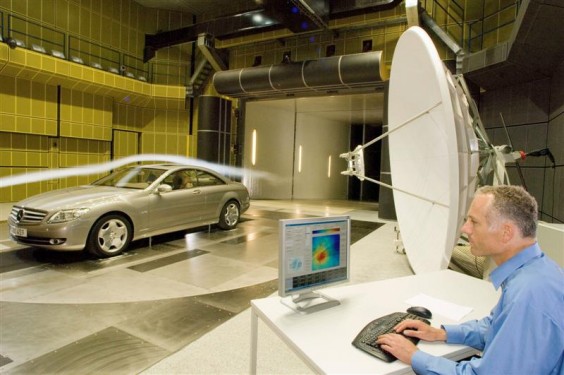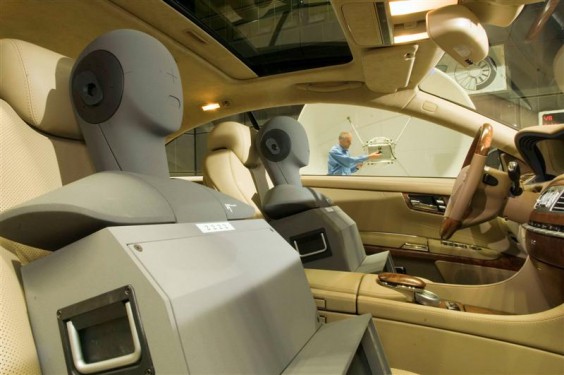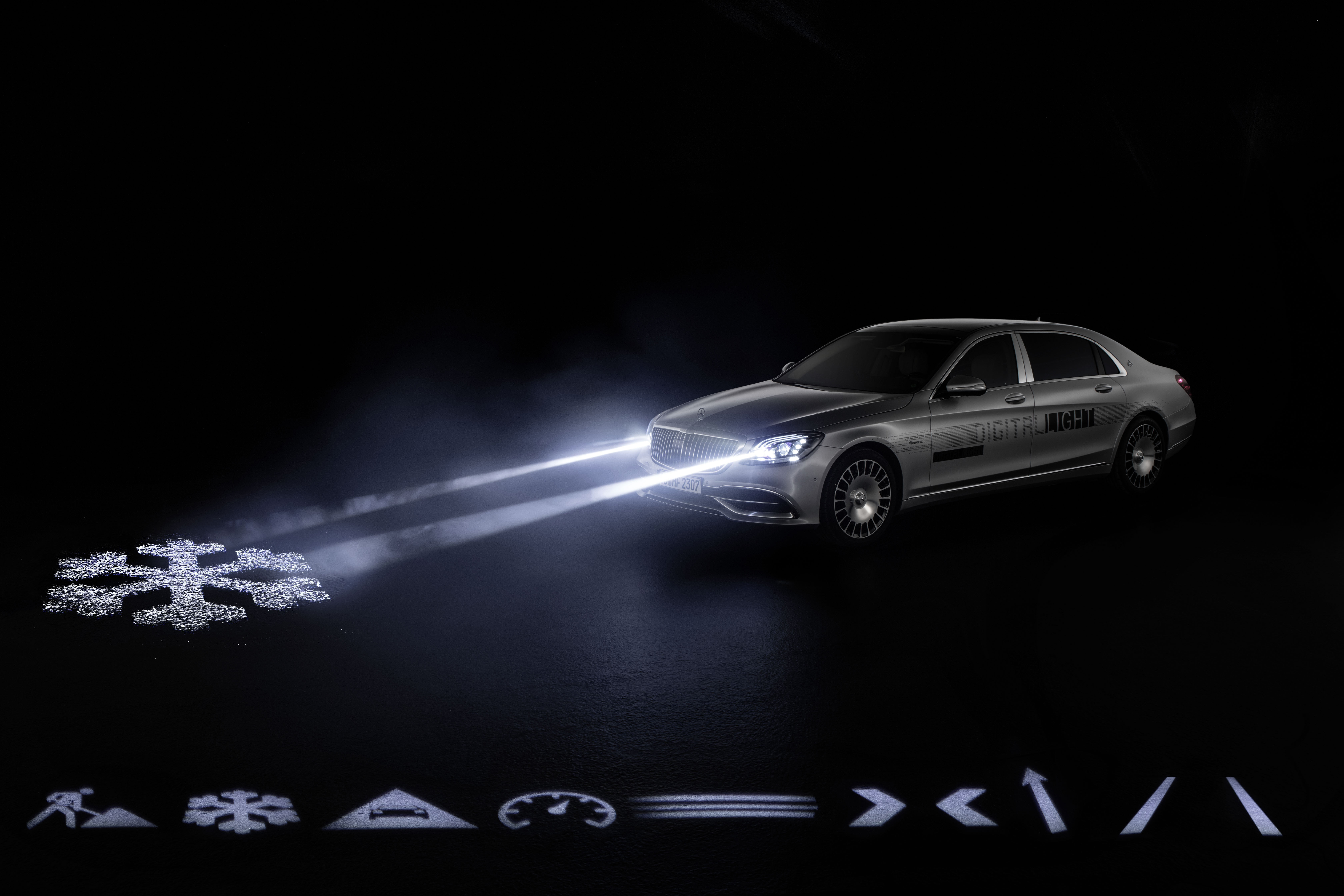Comfort as an audible experience


The technology behind the new Mercedes-Benz CL-Class: Comfort as an audible experience: The new Mercedes coupe is the quietest car in the luxury class.
The first-class comfort offered by the new Mercedes-Benz CL-Class is also an audible experience. Thanks to meticulous development work and the most modern testing procedures, the coupe is by far the quietest car in its class.
In addition to the noise configuration and sound insulation of the engine, exhaust system and chassis of the new CL-Class, it is the cars good aero-acoustics in particular that make it a very quiet driving experience for drivers and passengers. As early as the conceptual phase, Mercedes engineers took pains to ensure that the bodyshell was optimally streamlined so that wind noise was reduced.
It was with this in mind that they designed the airflow-efficient A-pillars, developed a more rigid bodyshell with reinforced outer surfaces and achieved a new sealing concept for the doors, which is acoustically even more efficient than in the preceding model. This exemplary noise insulation is also helped by the side windows, which have a thickness of six millimetres in the new CL-Class coupe.
Many other components were also developed with a view to aero-acoustic efficiency: for example the windscreen wipers, which are positioned very low down, out of the airstream, when not in use. A narrow stem between the exterior mirror housings and the doors also prevents wind noise, and a specially designed rubber seal between the rear window and the boot lid also makes for aero-acoustic efficiency. The tilting/sliding sunroof features serrated wind deflectors whose ridges create designed-in longitudinal air turbulence, thereby reducing thrumming noises when the roof is open.
Measurement technology: Noise analyses with a three-metre parabolic mirror
To carry out their aero-acoustic measurements, Mercedes engineers developed a new procedure involving a three-metre parabolic mirror fitted with numerous microphones, which acts as a sound reflector. From a distance of five metres, the microphones at the focal point of the mirror record the noises caused by the airstream as it passes around the vehicle body. While numerous individual measurements were formerly necessary for such analytical procedures, the new parabolic mirror process requires only a single measurement to examine complete areas of the vehicle body, e.g. the A-pillar, exterior mirror, side window and roof.
A video camera makes the area under examination visible on the computer screen. At the same time the system superimposes the wind noises onto the video image as different-coloured areas, depending on the sound volume and frequency. This enables sources of irritating noise and its distribution to be identified and examined. During the development of the new CL-Class this innovative aero-acoustic measuring procedure was supplemented with well-proven artificial head technology: a dummy with an artificial head, whose anatomically accurate auditory passages were equipped with capacitor microphones, was seated behind the steering wheel. These made both spatial sound recordings and precise measurements of sound pressure and frequency possible.
Subsequent evaluation of the test results showed how effective the noise reduction methods were. The acoustically sensitive area at the drivers head level appears as a dark blue, particularly quiet zone on the computer screen of the parabolic mirror microphone system. At a wind speed of 140 km/h, the interior noise level in this area is below 66 decibels.

Psycho-acoustics: Background noise subjectively perceived as pleasant
In addition to taking measurements, Mercedes engineers also consider it important to establish how drivers perceive the level of acoustic comfort. This is because some noises which the equipment registers as quiet can in fact be irritating, and compromise comfort on long journeys. They therefore use analytical methods which better reflect human audio-perception and provide key psycho-acoustic information about subjective perception of background noise.
One of these parameters is loudness. This is calculated on the basis of different frequency groups, and is better able to describe how humans perceive loudness than the noise level in decibels. At a wind speed of 140 km/h, an outstanding result of just 19 sone was measured in the new CL-Class. Other criteria for noise comfort include harshness, which predominantly evaluates high frequency noises such as hissing or whistling, and the articulation index. This indicates how easily the car occupants are able to converse during a journey. For example, it is irritating if the airstream creates a continuous, high-frequency rushing sound which makes conversation more difficult.
Mercedes engineers arrived at an articulation index of 78 per cent for the new CL-Class. This is more than ten percentage points above that of the preceding model, and significantly exceeds the value for other cars in the luxury class. The ideal conditions are therefore in place for easy communication between the driver, front passenger and rear seat occupants.
Hearing tests with 60 drivers confirmed the effectiveness of these aero-acoustic developments in the new Mercedes coupe. They were asked to evaluate certain noises, and thereby helped the engineers to achieve favourable aero-acoustic values.
Aero-acoustics – the discipline with the aim of reducing wind noise – is a relatively new field in automotive development, one in which Mercedes-Benz has been playing a leading role in recent years. The good aerodynamics of Mercedes passenger cars are also noticeable in acoustic terms, for if the airstream passes across the outer skin with minimal turbulence in the interests of low drag, this also leads to less noise. The drag coefficient (cW value) of the new CL-Class is 0.27, a 3.5 per cent reduction from the value of the predecessor model.
This means that the new CL coupe also sets the standard for its class where aerodynamic efficiency is concerned.





